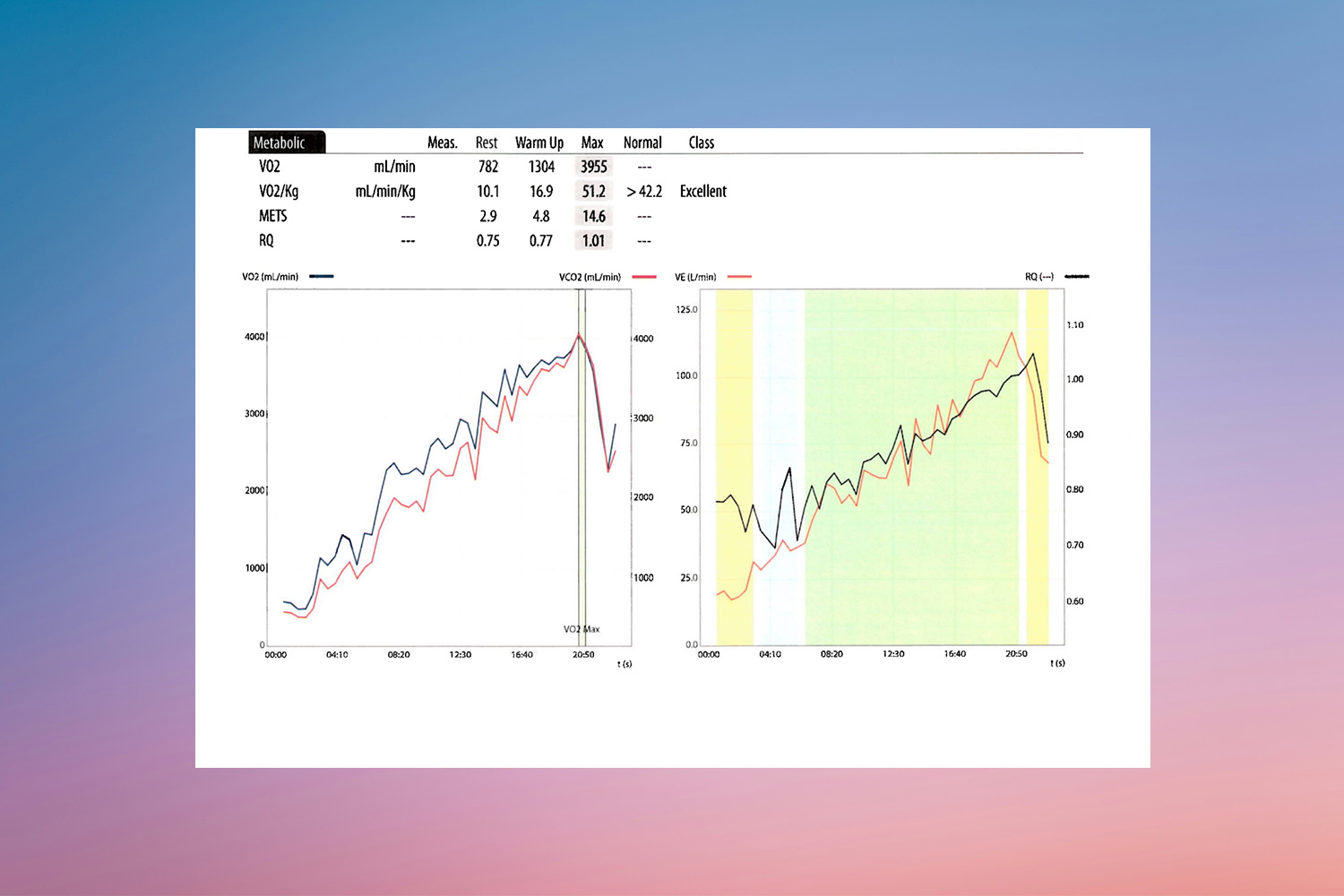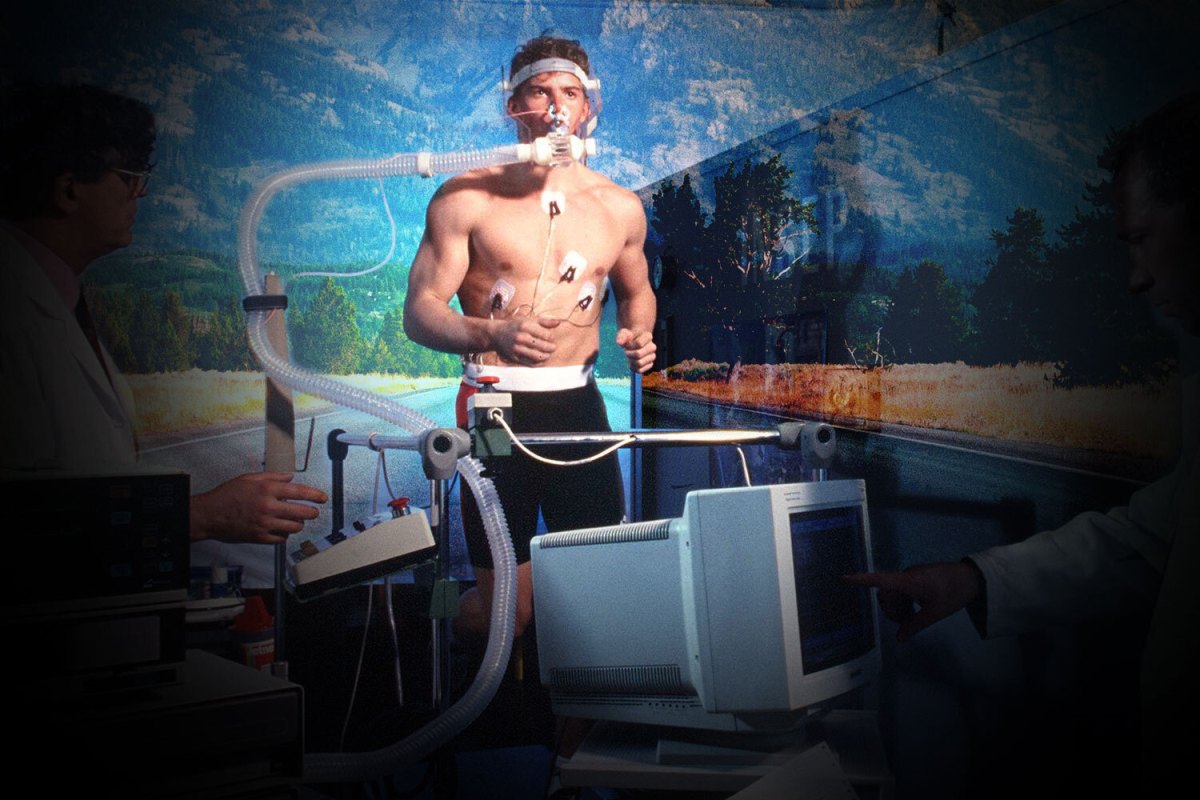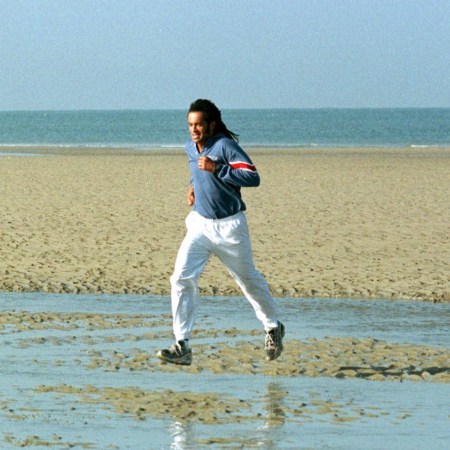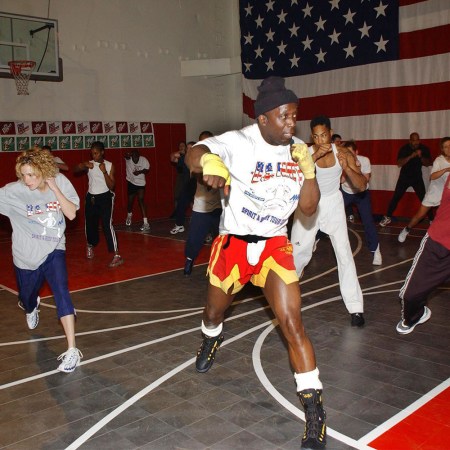For years, VO2 max tests seemed the exclusive purview of world-class endurance athletes. As an accurate (and relatively hardcore) measurement of an individual’s maximum aerobic capacity, the test was perfect for people who already knew that their legs and lungs were adept at transporting oxygen.
The greatest VO2 scores ever “blown” belong to Tour de France champions, long-distance trail runners, Olympic scullers and Norwegian cross-country skiers. The test — which is still primarily administered via a treadmill or cycle ergometer, and asks its subject to exercise to exhaustion — functioned as a performance coronation for these elites. Or, perhaps, a call-to-action to train even harder.
In recent years, though, VO2 max has ridden an increasing wave of mainstream relevance and urgency; the measurement hasn’t just leapt into the consciousness of amateur athletes (your friend who’s always got a race coming up), but it’s found an audience with “unfit subjects,” too (that’s medicalese for average adults, going about their lives).
Google Trends data shows a steady uptick in VO2 max searches over the last five years. Fueling this awakening, at least in part, is Dr. Peter Attia, the longevity expert who wrote Outlive and coined the “Centenarian Decathlon” concept. Attia has sung the praises of a better VO2 max score on podcasts and in Reddit AMAs.
Here’s his reasoning, as outlined on his site: “Simply bringing your VO2 max from ‘low’ (bottom 25th percentile) to ‘below average’ (25th to 50th percentile) is associated with a 50% reduction in all-cause mortality. When you go from ‘low’ to ‘above average’ (50th to 75th percentile) the risk reduction is closer to 70%!”
How do you “bring up” your measurement, though? Pretty simple: exercise. In a separate Twitter thread, he wrote, “I can’t dream of an intervention that has nearly this impact on human longevity. If intensive, well-formulated exercise does not occupy your first, second, and third priorities for longevity, it’s time to reexamine your priorities.”
There are nuances at play here — specifically in relation to what sort of exercise will up your VO2. But before you get into the weeds there, it’s critical you meet with a performance scientist to know exactly where you stand. That’s what I did last month, during a wellness retreat at Canyon Ranch in the Berkshires. (Read more about that here, if interested.)
The Best Practices for Improving Your “Cardio Recovery”
Plus, a primer on what the biometric even meansOn Your Mark!
I took my VO2 max test on a treadmill in what was essentially an oversized doctor’s office. There was also a cycle ergometer present, which exercise physiologist (and test administrator) Heather Giordano, MS, told me is a popular option in the region. The Berkshires are home to a lot of cyclists.
As a regular runner, though, I felt more comfortable tackling the treadmill. Giordano affixed a heart-rate monitor to my chest while peppering me with a variety of questions about my personal profile and physical fitness. I gave her a quick rundown: I’m 29 years old, 175-ish pounds, run 20 miles a week, perform four strength-training sessions a week and do lots of walking.
I liked my chances with the test. Though firmly an amateur athlete, I did break three hours in the New York City Marathon last year. I figured on a hypothetical spectrum from “unfit subject” to Lance Armstrong, I might be closer to the elite side. I’d kept my exercise light and stomach relatively empty the 12 hours prior to my test, in anticipation of a massive effort.
What We’re Testing For
After I hopped onto the treadmill, Giordano wrapped a blue oxygen mask around my face. It was attached to a pair of computer monitors, which were connected to the treadmill; I felt like a cyborg for a bit, but I have some experience running with a mask (pandemic days), and besides, Giordano scaled me up slowly. I moved across the ribbon at walking pace as she pointed out key biomarkers in real time: my HR hovering around 65 bpm, my RQ at 0.70.
The latter measurement, which stands for respiratory quotient, describes the ratio of CO2 produced to O2 consumed. As your exercise ramps up in intensity, your body supports the effort by sucking up and using all the oxygen it can. Eventually, CO2 build-up takes over, which leads to lactate accumulation and hyperventilation. (Extreme huffing and puffing, in other words.) This starts right around an RQ of 1.0.
An expert like Giordano can study all these figures at once and draw conclusions, like what sort of shape you’re in, or how you could train differently in the future. Once the test started up, and I was running at a pace of 7 mph, she could see that my HR was hanging out at 118 bpm and my RQ was 0.78. She could also see my VO2 measurement at 28.8 ml/kg/min, which, crucially, was not yet a VO2 max. That came later.
“Based on these figures,” she said at the time, “I can tell that this is your sweet spot. You could run all day at this pace.” She was referring to Zone 2, or continuous cardio, an aerobic exercise pattern associated with improved cardiovascular function and fat-burning. My heart rate was the dead giveaway. Despite the wires and tubes jangling around my chest, I was comfortable.
While VO2 max is the star of the show, the test offers a whole slew of tangential insights. For instance, it teaches you how your body expends energy at various intensities of exercise. You can literally see it on the chart as you run. Until your body reaches an RQ of 1.0, you’re mostly burning fat (or a mix of fat and carbohydrates). It’s a good way to stay trim, if that’s your thing, and a good place to hammer for long, slow distance (LSD) training. LSD has also been shown to increase capillary density in muscle tissues.
Was the Test Difficult?
Eventually, because a VO2 max text involves maxing out, Giordano accelerated the treadmill to its very fastest setting (a mile pace of 5:27). My heart rate leapt from 140 bpm, to 160, then all the way up to 177 after she gave up trying to press the pace toggle — I was a little surprised the machine wouldn’t go to 5:00/mile pace myself, an industry standard — and elected to just up the grade instead.
Is a VO2 max test hard? Of course it is. There’s only one way to get that final number — and sometimes you have to sprint “uphill” in order to do it.
My number, it turned out, was 52.4 ml/kg/min. (For those looking at the chart below and see 51.2, there is a more detailed readout that gave a more accurate max.) Giordano congratulated me as the treadmill groaned back to walking pace and the oxygen mask suddenly felt hot and constrictive on my face. I came back down to reality, taking deep breaths and shaking my wobbly legs through a cool down as she explained my results.
My VO2 max measurement arrived a little over 20 minutes into the exercise. This is in the normal range; most tests last between 10 and 20 minutes. My RQ, meanwhile, topped out at 1.05, which suggests my body had passed its anaerobic threshold and was deep into burning carbohydrates. Assuming I had the mental willpower to keep running at that pace — or the performance imperative, as one would in a race — I’d be in serious danger of “bonking.”
(This is why, in races, athletes either pace themselves within limits that make sense, or bring auxiliary fuel in the form of glucose gels. Glucose can be metabolized more quickly than fats, providing the energy needed for high-intensity exercise. Biologically speaking, that’s also why that RQ fuel shift happens in the first place!)

The Results
I felt satisfied with my effort. It’s sort of hard not to. Assuming your test doesn’t get interrupted in some way (resulting in an incomplete or invalid reading), your VO2 max is an incontrovertible physiological fact. Did I feel satisfied with the result, though?
Yes, to a certain extent, though I was humbled a little bit. For one, I’d probably put too much stock into the VO2 max reading on my Apple Watch (which routinely pegs me in the mid-60s). Clearly, the software at a health clinic is more reliable than a fitness tracker I have to charge twice a day. Giordano informed me that I landed right around the 75th percentile for my age group, 20-29. That qualifies for a “high” VO2 max reading. But on the heels of my marathon performance, logged last November, I’d be lying if I didn’t say I was hoping for an “elite” reading.
Check out a snapshot of the percentile rankings — sorted by age and gender — here. Before I could get too into my feelings, Giordano pointed out that I’m the final eligible age in an age group that includes college athletes, and other high-performing athletes who might self-select themselves into a VO2 max test. She encouraged me to feel good about my reading, and focus on carrying it into my next decade.
Besides, the findings were an inlet into just how preposterously fit elite and sub-elite athletes are. The delta between my body’s ability to use oxygen and, say, Kilian Jornet’s ability, is enormous. Some of the greatest cardio athletes in the world — runners, cyclists, rowers, skiers, etc. — hit VO2 maxes of 80 ml/kg/min or more. If you’re curious, the highest ever recorded is 97 ml/kg/min, set by Norwegian cyclist Oskar Nikolai Birger Svendsen in 2012.
We don’t hold a candle to the animal kingdom, though: thoroughbred horses (193 ml/kg/min), Alaskan huskies (240 ml/kg/min) and pronghorn antelopes (300 ml/kg/min) all leave us in the dust.
The Story of a Berkshires Cyclist
Giordano told me a fascinating story before I left her office, about a man in his late 30s who showed up at her clinic one day and blew a VO2 max in the 80s. It was a “call the other scientists into her office” kind of moment. Believe it or not, the patient had never been much of a long-distance athlete. He was a former skateboarder looking to get his health back on track. Now he’s on a cycling team in the Berkshires.
Two takeaways here: First off, while I wish this guy only success in his cycling career, your VO2 max isn’t a rock-solid predictor of podium finishes in sports. An elite measurement suggests elite potential, but racing is a fickle beast that requires a diligent training routine, great pacing instincts, mental toughness and years of experience. The athlete with the best VO2 max does not always win. Secondly, the man is a reminder that some athletes simply hit the VO2 genetic lottery. Assuming they recognize their uncommon motor at a young age, and take up a cardiovascular pursuit, they’re in pole position to make a mark on the sport of their choice.
No wonder the Norwegians — sport-obsessives who spend their childhoods scrambling up hills — lead the world’s all-time, VO2 max leaderboard. Altitude training is one way to supercharge the measurement; the lower oxygen concentration up in the mountains forces the body to adapt for more efficient oxygen use. This can translate to improved performance at sea level.
How to Up Your VO2 Max
For everybody else, the amateur athletes and “unfit subjects” who don’t have easy access (or the will) to climb a mountain range on a Wednesday, how can you up your VO2 max? How can you fine-tune or jumpstart an exercise routine that will confer those longevity benefits Attia keeps alluding to online?
It all starts with a consistent aerobic routine. Giordano told me the last thing they want to see from anyone who walks into her clinic — young or old, male or female — is a VO2 max under 20 ml/kg/min. The best way to avoid that rock-bottom score is to start walking every single day. Remember, your VO2 max will naturally depreciate as you age. So the best time to start a routine is ASAP.
If you’re good with walking, start jogging. Or running. Or cycling, hiking, swimming or rowing. At the most elemental level, the way to maintain or improve a VO2 max is to build a reliable aerobic base. Based on the data, a 40-year-old man should be right in that 35 ml/kg/min wheelhouse. That’ll puts you in a decent position, relative to the population, to dodge a cardiovascular event as you age. But know that it takes work — consistency and commitment.
It’s worth it, though. The more you do, the more you get to do, and for longer. Once you master an aerobic base, you can play around with distance, effort and tempo. (It’s similar to the core of any long-distance running scheme.) One day you might do a super long effort (the LSD philosophy I mentioned earlier). Another day, you might do a HIIT workout, which only requires a few minutes of extreme aerobic exercise at a time. This forces you to hit your VO2 max almost immediately…then recover…then hit it again, over and over. It’s chaos for the body, but also a perfect way to compel it to use oxygen more efficiently.
Another day, getting even more granular, you could schedule a tempo workout, which is an example of threshold training. Think: a pace that really hurts but won’t kill you. Your body’s able to keep clearing lactate. Oh, and as always, strength training can make a huge difference, too. Prioritize bodyweight circuits, if you have to choose.
Before you do any of this, though, book a session to schedule a conventional VO2 max test. Find out exactly what you’re working with. There are at-home kits and apps and all sorts of gizmos marketed as ways to uncover this information at a discount, but I think it’s worth the $400 to get an accurate reading. It’s the rest of your life we’re talking about.
The Charge will help you move better, think clearer and stay in the game longer. Subscribe to our wellness newsletter today.


























